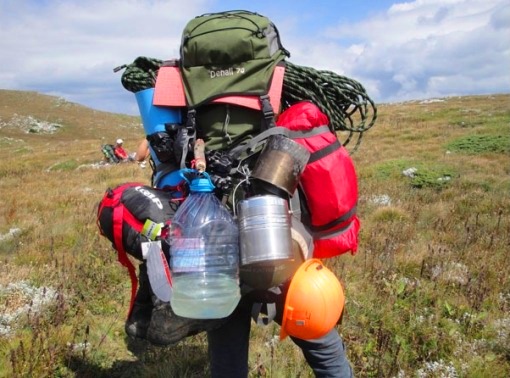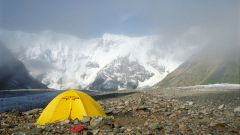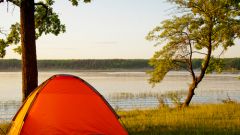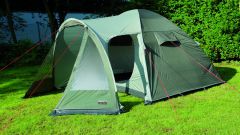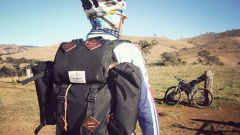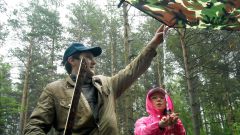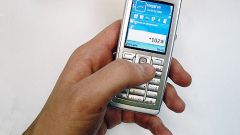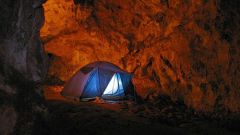Think and make a list you need in the way of things. Do not take anything superfluous – it's unnecessary weight on your shoulders.
Divide the list into categories according to the degree of need. Whether the division into blocks accessories: spare shoes, and spare warm clothes, kitchenware, food, first aid kit, hygiene products, and other fines. Talking separately hinged equipment in backpack: sleeping bag, tent, camping Mat, cushion, foldable trinoga for the fire and the like.
Now stuff each category and place in individual waterproof plastic or canvas bag. This will prevent your things from getting wet and saves time when laying backpack and search it.
Stack those thing-units should be in this order, to the heaviest of them were approximately at the level of the shoulder blades. This allows you to distribute the weight of the backpack so that you have it is almost not felt. When the equipped backpack will be on you, strapped tightly to his back. If the backpack has waist straps, use them. If not, lower back can be pushed travel seat. It will save your back from excessive pressure or friction of the backpack. Useful and the strap, tightening the shoulder straps – it will not allow them to pull your shoulders back.
The stacking sequence thing-blocks similar to the following: change of shoes (you can also hang to your backpack, especially if it requires drying and ventilation), and spare warm clothes, kitchen utensils, food. To save space and prevent rattling when walking some of the products can be installed in kitchen utensils (pots, cups, mugs).
A first aid kit should also be put in a waterproof bag in a separate pocket of a backpack, which is desirable to indicate either a sticker or a patch, or simply drawing a cross. This will save time needed for the first aid.
Hygiene products (toilet paper, wet wipes, soap, towel, etc.). are placed in a separate pocket of a backpack.
Drinking water is in 2-3 liter plastic bottle can be laid or inside of a backpack or strapped to it external straps.
A small flask, camping knife, flashlight can be hang on the waist belt.
In the advanced pouches of the backpack, in the pockets of jackets or trousers, within reach of your hands, it is possible to place products for a quick snack on the go, a lighter, matches, communications, navigation, photo/video camera and other trifles necessary on the way.
Sleeping bag, rope, tent, shovel, camping Mat, trinoga for a fire, and other larger items are placed on the backpack using the provided straps for this. The principle of placing the same – heavy things closer to the body and higher off the ground.
Close should be placed in a backpack, waterproof clothes, rainwear and signaling (signaling vests, rockets, checkers).
After you have filled the entire backpack, tighten the side and vertical straps. Wgaw thereby his side, you take all available space, not allowing to spread things inside the backpack. The dimensions of the backpack, put on his things, shall not exceed the width of your shoulders. This will allow you to center the weight and more freely pass the obstacles.
To wear a heavy backpack is necessary by putting him on the ground or a small hill. Wearing all the straps are buttoned and pulling all the straps, lift the backpack by using the leg power, not back. Thus, you will avoid injuries and strains. Remove their backpack in reverse order.
Survival kit, some carry camping, hung separately on a waist belt. It is a small pouch with a sealed means of survival in extreme situations, when for some reason there is no possibility to use the contents of your backpack. Therefore, this set must be always with you.
The army units there is a practice test for noise. To do this, all the gear you need to jump a little. If there is a noise, its causes eliminated. Only then can you move.
